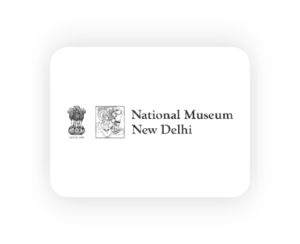Industry Application

Heritage Experiences
- 3D Models of Monuments and Sites
- 3D Digital Reconstruction of Damaged Parts
- 3D printed true-scale Monument replicas
- History in Holograms
- Interactive Museum Installations
- Heritage in VR Headsets
- AR Apps for Museum and On-site tours

Heritage Experiences
- 3D Models of Monuments and Sites
- 3D Digital Reconstruction of Damaged Parts
- 3D printed true-scale Monument replicas
- History in Holograms
- Interactive Museum Installations
- Heritage in VR Headsets
- AR Apps for Museum and On-site tours
Our cultural heritage is delicate and prone to weathering, deterioration, and ruin.
A fine example is the Notre Dame Cathedral in Paris that was almost destroyed due to a fire that broke out beneath its roof. However, the iconic building’s interior and exterior are being restored to their former glory thanks to a Vassar College professor who painstakingly created a digital 3-D model of the landmark four years ago.
On the other hand, we take a look at the devastation in Nepal due an earthquake that shook the nation – 5 sites of global and religious significance were reportedly heavily damaged, with no way to replicate their former state.
Apart from digitising and preserving our culture for centuries to come, technology plays a far bigger role. The convergence of tech and culture gives rise to a plethora of possibilities. We could embark on a path that leads to a new age tourism. With Web3 and the metaverse in development, a shift to virtual reality is inevitable. People can use all their senses to experience tangible & intangible heritage remotely from any part of the world.
The future is today.
ASI’S 5 MONUMENT PROJECT
The Department of Science & Technology (DST), Government of India, has been investing in promoting Indian Cultural heritage and its preservation and presentation to the world by sponsoring technology-based projects under the scheme ‘Indian heritage in Digital Space.’ In line with the government’s Digital India program, these DST initiatives are supported by the Prime Minister’s office (PMO). The aim is to showcase how indigenous, home-grown talent in India, supported by the government, can offer innovations that can match and even surpass many global initiatives.
The foundation of these projects was laid by the Indian Digital Heritage (IDH) project. The goal of the research project (www.digitalhampi.in) was to extend the power of digital technologies to well beyond monuments to art, architecture, and all forms of cultural and historical knowledge. In fact, the initiative gave birth to some of the most advanced techniques and technologies in digital heritage preservation. As part of this initiative, around 37 new technologies were developed, and 7 prototypes were demonstrated.
Under this programme, Vizara Technologies, alongside a tech team at IIT Delhi was the implementation agency for 2 additional projects related to further enhancement of the IDH technologies.
Vizara Technologies created five mixed-reality installations consisting of 3D printed scale models of different monument complexes. These installations combined multiple technologies using which a user can interact with the model and experience a personalized, realistic virtual walkthrough of the heritage site, among other interactions.
“Vizara ViRaasat” – the installation kiosk for a monument, as successfully created for the Vittala Temple in Hampi – consists of a scaled-down 3D printed replica of the monument with an interactive laser-pointer based interface to provide the visitor a personalized virtual walkthrough of the site.
The PM’s office issued a mandate to create the Vizara ViRaasat Kiosk for 5 monument sites across India. The monuments were selected based on the country’s diversity and the availability of readily available 3D scan data with the government. Out of the 5 selected monuments, four (4) are UNESCO World Heritage sites.
| Selected Monuments | Technologies Used | Further enhanced AI-based Technologies |
|
monument using a laser pointer. |
|
Vizara has created a pipeline that can be used to digitise any area, site, building, product, or person – both at a national and international level.
The 2nd part of the project was to showcase the translation of technologies developed under the IDH Initiative. The Project outcomes done by IIT-Delhi, IIT-Bombay, NID, CSIR-CBRI, KSCST, and Vizara Technologies were presented in an Exhibition that took place at the National Museum – the 1st International Heritage Symposium & Exhibition (IHSE) 2020. The event was coordinated & organised by Team Vizara, inaugurated by the Union Minister for Culture and Tourism, GoI, and attended by eminent International and Indian experts in the field of Digital Heritage.
Caption – India’s 1st International Heritage Symposium & Exhibition 2020
DIGITISING HAMPI: A DIGITAL MINI-SPECTACLE FOR SHOWCASING THE GLORY OF HAMPI
The Department of Science & Technology (DST), Government of India, has been investing in promoting Indian Cultural heritage and its preservation and presentation to the world by sponsoring technology-based projects under the scheme ‘Indian heritage in Digital Space.’ The foundation of these projects was laid by the Indian Digital Heritage (IDH) project.
As a part of the IDH Project digital conjectural reconstruction was done mainly of one temple complex of Hampi – the Vittala Temple complex. This was done to enhance the Hampi experience and to showcase the glory of Hampi to the world. It was planned that this project would conduct research into digital reconstruction of social life and architecture of some more prominent Hampi monuments and provide, as a deliverable, a Digital Mini spectacle of the envisioned grand spectacle of Hampi. The IDH proven technologies used in the project were:
- Laser scanning to generate point clouds
- 3D modelling, printing, and rendering
- Interfaces with AR, holographic projection, 3D fabrication and projections.
Outcomes:
| A large size replica of the Vijaya Vittala Temple complex with intriguing AR based interactions – The replica is of scale 1:14 to the original temple and is housed in a room of size 40 feet X 27 feet with each Mantapa structure of 2-3 feet in height with a table height of 3.5 feet. Engaging aspects of the Vittala Temple such as the Musical pillars & Relief sculptures are highlighted in the installation using holographic and projection technologies. | An on-site AR game app on the site of Virupaksha Bazaar street – A narrative of the Rathotsava festival of Hampi was finalized as the theme of the app. The app was developed by NID (concept & design), IIT Bombay (technical provisions), and Vizara Technologies (modelling & coding). The aim was to showcase how AR/VR technologies can be used to preserve and present intangible heritage through digital recreation of social life. |
Caption: Roomscale Vittala Temple Complex displayed at the IHSE 2020, National Museum
HOLOGRAPHIC PROJECTION OF AN INDIAN CLASSICAL DANCE
Under the Indian Digital Heritage (IDH) Project initiated by Department of Science & Technology (DTS) and backed by the GoI, Vizara Technologies developed indigenous technologies and interactive heritage kiosks to preserve and present Indian Culture to the world. The work done under this project was showcased in the 1st International Heritage Symposium & Exhibition (IHSE) 2020 at the National Museum.
A roomscale recreation of the Vittala Temple complex, Hampi in a scale of 1:!4 was 3D printed, modelled, and rendered by Vizara Technologies for the event, amongst 5 other Heritage Sites.
One of the immersive interactions developed for the Hampi Experience was a holographic projection of an Indian Classical Dance taking place inside the Main Mandappa of the Vittala Complex.
Caption: Holographic Projection within the 3D Printed Main Mandappa of the Vittala Temple Complex, Hampi
INTERACTIVE HERITAGE INSTALLATIONS
“Vizara ViRaasat” – the interactive, intelligent, immersive installation kiosk developed by Vizara Technologies for a Monument, consists of a scaled-down 3D printed replica of the monument with an interactive laser-pointer based interface to provide the visitor a personalized virtual walkthrough of the site, amongst other interactions
The fabrication of the Monument Models was done with PLA (Poly Lactic Acid) a biodegradable polymer. Vizara ensured high-quality 3D printing, enhanced by post-processing the 3D printed models with realistic paint and by adding landscape models for an aesthetically whole piece. PLA (Poly Lactic Acid) polymer was used for 3D printing as raw material, which is a biodegradable polymer.
Examples of Interactions:
AR-based Interactions of the Kashi Vishwanath Temple ViRaasat Kiosk:
- A Projection-Mapping show was developed in sync with the physical model that talks about the historical and mythological aspects of the monument.
- A user could navigate the monument using a Game Controller and Alexa with the feedback appearing as footsteps on the physical model. The guided tour would then take the path created by the user and show a POV walkthrough on the screen.
- A Guided Tour of the Kashi Vishwanath Temple was developed by processing laser scanned data through 3D modelling and rendering to create a virtual environment or a dedicated “Metaverse” for the temple complex. This guided tour is in sync with the physical model.
- Using Computer Intelligence, a projection of the time of day in the virtual environment was also developed, along with AI based Q&A of some curated questions via Alexa.
The above is a small part of the total immersions & interactions that were created by Vizara Technologies.
Caption: “ViRaasat Kashi Vishwanath Temple Kiosk at the IHSE 2020 Event”
MR BASED INTERACTIVE APP FOR JIO GLASS
Vizara Technologies was approached by JIO Tesseract to develop an application for its soon-to-be-released MR Glass. The app was also shortlisted to be a part of the launch of the Glass with only 60 applications making the cut.
The app, titled Indian Digital Heritage (IDH) combines technology with culture to provide the user with a holistic experience of a monument site and arms them with knowledge about the same.
History, Mythology, Architecture, Images, Guided Tours, and interactable AR Models of the monuments are some of the features of the app.
3D MODELLED GUIDED TOURS OF HERITAGE SITES
Vizara digitally reconstructed the top of the Stone Chariot, Hampi using 3D modelling techniques.
The Stone Chariot is a temple built in the 15th century AD and is located inside the Vijaya Vittala temple at Hampi, a UNSECO World Heritage site in Karnataka. The temple complex is now in ruins, but the Stone Chariot near its east entrance is mostly intact, resplendent in its architectural beauty. The top part of the chariot, however, has degraded overtime, and is missing.
The conjectural digital reconstruction of the top part was an outcome of the research done under the Indian Digital Heritage (IDH) project of the Department of Science and Technology, Government of India (www.digitalhampi.in), which included the top technical and cultural institutes of the country. This is possibly the only version of the reconstructed top of the Chariot.
An extensive study was done of other monuments and artefacts of the same period as well as of available scriptures providing architectural details to match the same artistic style and arrive at the nearest possible conjecture for the top part of the Chariot.
Caption: 3D Printed Memorabilia: Reconstructed Stone Chariot, Hampi with an AR App
3D PRINTED MEMORABILIA
Vizara Technologies uses additive manufacturing, or 3D printing, to create unique memorabilia that comes with an integrated AR app. The products are available for purchase on the website, on amazon, and on GEM. Vizara has also undertaken bulk projects for government related gifting for particular events.
Some of the products include:
- True-scale replicas of Indian Heritage Monuments:
- These ViRaasat gifts are probably the only true-scale replicas of Indian monuments and artefacts that are available in the market
- They are created using cutting-edge technologies of laser-scanning, 3D modelling and 3D printing which leave no margin of deviation from the original structure with all its intricate details intact. This makes them truly exclusive collectible items for every heritage enthusiast.
- Each replica comes with an integrated AR app that includes a guided tour and AR model of the monument
- Personalised & Heritage Lithophanes
- Lithophane frames can only be created using 3D printing technology. It is essentially an etched or moulded artwork in very thin translucent porcelain or plastic that can be seen clearly only when back lit with a light source.
- Ready lithophane designs include the Taj Mahal, the Dandi March, Ramayana Panels from the Hazarama Temple and more
- Customers can also upload an image and get a personlised lithophane for themselves
- Gandhi Statue
- The 3D statues were first created for the Gandhi @ 150 celebration that took place in 2020, and are now available for purchase by the public. The statues come with an integrated AR app that allows the user to learn about Gandhi ji’s journey, artefacts and more.
Caption: “3D Printing a Personalised Lithophane”
Having 5 years of extensive experience in creating intelligent, interactive and immersive products & solutions, we are well equipped to handle and deliver any tech-based solutions required by you or your organisation.
Backed by a strong tech team, mentored by industry leaders, closely associated with government institutes & premiere technical institutes, and guided by a highly qualified management, we bring a full repertoire to the table.
Let’s engage and discuss how we can solution for you. Let’s Talk.
Our cultural heritage is delicate and prone to weathering, deterioration, and ruin.
A fine example is the Notre Dame Cathedral in Paris that was almost destroyed due to a fire that broke out beneath its roof. However, the iconic building’s interior and exterior are being restored to their former glory thanks to a Vassar College professor who painstakingly created a digital 3-D model of the landmark four years ago.
On the other hand, we take a look at the devastation in Nepal due an earthquake that shook the nation – 5 sites of global and religious significance were reportedly heavily damaged, with no way to replicate their former state.
Apart from digitising and preserving our culture for centuries to come, technology plays a far bigger role. The convergence of tech and culture gives rise to a plethora of possibilities. We could embark on a path that leads to a new age tourism. With Web3 and the metaverse in development, a shift to virtual reality is inevitable. People can use all their senses to experience tangible & intangible heritage remotely from any part of the world.
The future is today.
ASI’S 5 MONUMENT PROJECT
The Department of Science & Technology (DST), Government of India, has been investing in promoting Indian Cultural heritage and its preservation and presentation to the world by sponsoring technology-based projects under the scheme ‘Indian heritage in Digital Space.’ In line with the government’s Digital India program, these DST initiatives are supported by the Prime Minister’s office (PMO). The aim is to showcase how indigenous, home-grown talent in India, supported by the government, can offer innovations that can match and even surpass many global initiatives.
The foundation of these projects was laid by the Indian Digital Heritage (IDH) project. The goal of the research project (www.digitalhampi.in) was to extend the power of digital technologies to well beyond monuments to art, architecture, and all forms of cultural and historical knowledge. In fact, the initiative gave birth to some of the most advanced techniques and technologies in digital heritage preservation. As part of this initiative, around 37 new technologies were developed, and 7 prototypes were demonstrated.
Under this programme, Vizara Technologies, alongside a tech team at IIT Delhi was the implementation agency for 2 additional projects related to further enhancement of the IDH technologies.
Vizara Technologies created five mixed-reality installations consisting of 3D printed scale models of different monument complexes. These installations combined multiple technologies using which a user can interact with the model and experience a personalized, realistic virtual walkthrough of the heritage site, among other interactions.
“Vizara ViRaasat” – the installation kiosk for a monument, as successfully created for the Vittala Temple in Hampi – consists of a scaled-down 3D printed replica of the monument with an interactive laser-pointer based interface to provide the visitor a personalized virtual walkthrough of the site.
The PM’s office issued a mandate to create the Vizara ViRaasat Kiosk for 5 monument sites across India. The monuments were selected based on the country’s diversity and the availability of readily available 3D scan data with the government. Out of the 5 selected monuments, four (4) are UNESCO World Heritage sites.
| Selected Monuments | Technologies Used | Further enhanced AI-based Technologies |
|
monument using a laser pointer. |
|
Vizara has created a pipeline that can be used to digitise any area, site, building, product, or person – both at a national and international level.
The 2nd part of the project was to showcase the translation of technologies developed under the IDH Initiative. The Project outcomes done by IIT-Delhi, IIT-Bombay, NID, CSIR-CBRI, KSCST, and Vizara Technologies were presented in an Exhibition that took place at the National Museum – the 1st International Heritage Symposium & Exhibition (IHSE) 2020. The event was coordinated & organised by Team Vizara, inaugurated by the Union Minister for Culture and Tourism, GoI, and attended by eminent International and Indian experts in the field of Digital Heritage.
Caption – India’s 1st International Heritage Symposium & Exhibition 2020
DIGITISING HAMPI: A DIGITAL MINI-SPECTACLE FOR SHOWCASING THE GLORY OF HAMPI
The Department of Science & Technology (DST), Government of India, has been investing in promoting Indian Cultural heritage and its preservation and presentation to the world by sponsoring technology-based projects under the scheme ‘Indian heritage in Digital Space.’ The foundation of these projects was laid by the Indian Digital Heritage (IDH) project.
As a part of the IDH Project digital conjectural reconstruction was done mainly of one temple complex of Hampi – the Vittala Temple complex. This was done to enhance the Hampi experience and to showcase the glory of Hampi to the world. It was planned that this project would conduct research into digital reconstruction of social life and architecture of some more prominent Hampi monuments and provide, as a deliverable, a Digital Mini spectacle of the envisioned grand spectacle of Hampi. The IDH proven technologies used in the project were:
- Laser scanning to generate point clouds
- 3D modelling, printing, and rendering
- Interfaces with AR, holographic projection, 3D fabrication and projections.
Outcomes:
| A large size replica of the Vijaya Vittala Temple complex with intriguing AR based interactions – The replica is of scale 1:14 to the original temple and is housed in a room of size 40 feet X 27 feet with each Mantapa structure of 2-3 feet in height with a table height of 3.5 feet. Engaging aspects of the Vittala Temple such as the Musical pillars & Relief sculptures are highlighted in the installation using holographic and projection technologies. | An on-site AR game app on the site of Virupaksha Bazaar street – A narrative of the Rathotsava festival of Hampi was finalized as the theme of the app. The app was developed by NID (concept & design), IIT Bombay (technical provisions), and Vizara Technologies (modelling & coding). The aim was to showcase how AR/VR technologies can be used to preserve and present intangible heritage through digital recreation of social life. |
Caption: Roomscale Vittala Temple Complex displayed at the IHSE 2020, National Museum
HOLOGRAPHIC PROJECTION OF AN INDIAN CLASSICAL DANCE
Under the Indian Digital Heritage (IDH) Project initiated by Department of Science & Technology (DTS) and backed by the GoI, Vizara Technologies developed indigenous technologies and interactive heritage kiosks to preserve and present Indian Culture to the world. The work done under this project was showcased in the 1st International Heritage Symposium & Exhibition (IHSE) 2020 at the National Museum.
A roomscale recreation of the Vittala Temple complex, Hampi in a scale of 1:!4 was 3D printed, modelled, and rendered by Vizara Technologies for the event, amongst 5 other Heritage Sites.
One of the immersive interactions developed for the Hampi Experience was a holographic projection of an Indian Classical Dance taking place inside the Main Mandappa of the Vittala Complex.
Caption: Holographic Projection within the 3D Printed Main Mandappa of the Vittala Temple Complex, Hampi
INTERACTIVE HERITAGE INSTALLATIONS
“Vizara ViRaasat” – the interactive, intelligent, immersive installation kiosk developed by Vizara Technologies for a Monument, consists of a scaled-down 3D printed replica of the monument with an interactive laser-pointer based interface to provide the visitor a personalized virtual walkthrough of the site, amongst other interactions
The fabrication of the Monument Models was done with PLA (Poly Lactic Acid) a biodegradable polymer. Vizara ensured high-quality 3D printing, enhanced by post-processing the 3D printed models with realistic paint and by adding landscape models for an aesthetically whole piece. PLA (Poly Lactic Acid) polymer was used for 3D printing as raw material, which is a biodegradable polymer.
Examples of Interactions:
AR-based Interactions of the Kashi Vishwanath Temple ViRaasat Kiosk:
- A Projection-Mapping show was developed in sync with the physical model that talks about the historical and mythological aspects of the monument.
- A user could navigate the monument using a Game Controller and Alexa with the feedback appearing as footsteps on the physical model. The guided tour would then take the path created by the user and show a POV walkthrough on the screen.
- A Guided Tour of the Kashi Vishwanath Temple was developed by processing laser scanned data through 3D modelling and rendering to create a virtual environment or a dedicated “Metaverse” for the temple complex. This guided tour is in sync with the physical model.
- Using Computer Intelligence, a projection of the time of day in the virtual environment was also developed, along with AI based Q&A of some curated questions via Alexa.
The above is a small part of the total immersions & interactions that were created by Vizara Technologies.
Caption: “ViRaasat Kashi Vishwanath Temple Kiosk at the IHSE 2020 Event”
MR BASED INTERACTIVE APP FOR JIO GLASS
Vizara Technologies was approached by JIO Tesseract to develop an application for its soon-to-be-released MR Glass. The app was also shortlisted to be a part of the launch of the Glass with only 60 applications making the cut.
The app, titled Indian Digital Heritage (IDH) combines technology with culture to provide the user with a holistic experience of a monument site and arms them with knowledge about the same.
History, Mythology, Architecture, Images, Guided Tours, and interactable AR Models of the monuments are some of the features of the app.
3D MODELLED GUIDED TOURS OF HERITAGE SITES
Vizara digitally reconstructed the top of the Stone Chariot, Hampi using 3D modelling techniques.
The Stone Chariot is a temple built in the 15th century AD and is located inside the Vijaya Vittala temple at Hampi, a UNSECO World Heritage site in Karnataka. The temple complex is now in ruins, but the Stone Chariot near its east entrance is mostly intact, resplendent in its architectural beauty. The top part of the chariot, however, has degraded overtime, and is missing.
The conjectural digital reconstruction of the top part was an outcome of the research done under the Indian Digital Heritage (IDH) project of the Department of Science and Technology, Government of India (www.digitalhampi.in), which included the top technical and cultural institutes of the country. This is possibly the only version of the reconstructed top of the Chariot.
An extensive study was done of other monuments and artefacts of the same period as well as of available scriptures providing architectural details to match the same artistic style and arrive at the nearest possible conjecture for the top part of the Chariot.
Caption: 3D Printed Memorabilia: Reconstructed Stone Chariot, Hampi with an AR App
3D PRINTED MEMORABILIA
Vizara Technologies uses additive manufacturing, or 3D printing, to create unique memorabilia that comes with an integrated AR app. The products are available for purchase on the website, on amazon, and on GEM. Vizara has also undertaken bulk projects for government related gifting for particular events.
Some of the products include:
- True-scale replicas of Indian Heritage Monuments:
- These ViRaasat gifts are probably the only true-scale replicas of Indian monuments and artefacts that are available in the market
- They are created using cutting-edge technologies of laser-scanning, 3D modelling and 3D printing which leave no margin of deviation from the original structure with all its intricate details intact. This makes them truly exclusive collectible items for every heritage enthusiast.
- Each replica comes with an integrated AR app that includes a guided tour and AR model of the monument
- Personalised & Heritage Lithophanes
- Lithophane frames can only be created using 3D printing technology. It is essentially an etched or moulded artwork in very thin translucent porcelain or plastic that can be seen clearly only when back lit with a light source.
- Ready lithophane designs include the Taj Mahal, the Dandi March, Ramayana Panels from the Hazarama Temple and more
- Customers can also upload an image and get a personlised lithophane for themselves
- Gandhi Statue
- The 3D statues were first created for the Gandhi @ 150 celebration that took place in 2020, and are now available for purchase by the public. The statues come with an integrated AR app that allows the user to learn about Gandhi ji’s journey, artefacts and more.
Caption: “3D Printing a Personalised Lithophane”
Having 5 years of extensive experience in creating intelligent, interactive and immersive products & solutions, we are well equipped to handle and deliver any tech-based solutions required by you or your organisation.
Backed by a strong tech team, mentored by industry leaders, closely associated with government institutes & premiere technical institutes, and guided by a highly qualified management, we bring a full repertoire to the table.
Let’s engage and discuss how we can solution for you. Let’s Talk.


















